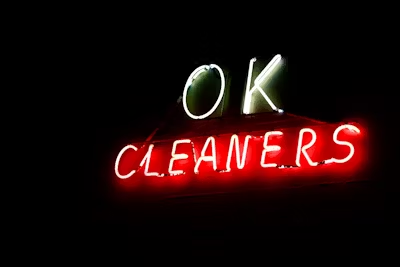Introduction
Arizona’s behavioral‑health landscape has evolved rapidly over the past decade, placing a renewed emphasis on integrated care for people who live with both mental‑health and substance‑use disorders—a combination clinicians call dual diagnosis. Because these co‑occurring conditions often interact in complex ways, effective treatment must address them together through coordinated medical, therapeutic, and social support services.
For low‑income residents, the primary payer is the Arizona Health Care Cost Containment System (AHCCCS), the state’s Medicaid program. While many families have heard of AHCCCS, few understand exactly which services are covered, how to qualify, or how to navigate authorization rules.
This article explains the fundamentals of dual‑diagnosis coverage under AHCCCS, outlines practical steps for finding quality providers, and highlights additional funding streams that can close remaining gaps. Whether you are a patient, family member, or clinician, the following guide will demystify the process and equip you to advocate for evidence‑based care in Arizona.
Understanding Dual Diagnosis Treatment in Arizona
Does Arizona Medicaid insurance cover dual diagnosis treatment programs? The answer is yes, because the Arizona Health Care Cost Containment System recognizes that co‑occurring substance‑use and mental‑health conditions require integrated care. When a member is assessed as having both disorders, their AHCCCS Complete Care plan must authorize a continuum of services that can include psychiatric evaluation, medication management, therapy, peer support, and case coordination.
Coverage is not limited to a single setting; beneficiaries may move among outpatient counseling, intensive outpatient programs, partial hospitalization, or residential treatment as clinically indicated. Each level of care has its own service limits, but policy allows extensions when medical necessity is documented. Importantly, Arizona uses a no‑wrong‑door approach: members can enter treatment through a primary‑care clinic, a crisis line, an emergency department, or an addiction center and receive paid services without restarting eligibility. Telehealth visits are covered as well.
How AHCCCS Works: Eligibility and Plans
AHCCCS operates like a network of private insurers, but its funding comes from federal and state Medicaid dollars, so applicants must meet residency, citizenship, and income criteria. Most adults qualify if household income is at or below 138 percent of the federal poverty level, while pregnant individuals, children, and certain medically frail adults have higher thresholds. Enrollment begins online or at a DES office and requires proof of income, identification, and Arizona address. After approval, members choose or are assigned an AHCCCS Complete Care plan, called an ACC, which functions as a managed‑care organization.
The ACC maintains a provider network, issues member cards, and handles authorizations for specialty services such as behavioral health. Tribal members may select a Tribal Regional Behavioral Health Authority, and those with serious‑mental‑illness status receive enhanced coordination. Selecting a plan with many dual‑diagnosis providers reduces referral delays and out‑of‑network denials.
Levels of Care Covered Under Medicaid
Integrated treatment is not one‑size‑fits‑all, so AHCCCS funds a tiered array of services that allows members to step up or down as clinical needs change. The most common entry point is outpatient counseling with medication management—often a weekly therapy session plus a monthly prescriber visit.
When symptoms persist, clinicians may order Intensive Outpatient Programs meeting at least nine hours per week. Partial Hospitalization Programs offer over twenty hours of structured care weekly while permitting participants to sleep at home. For those needing round‑the‑clock support, residential facilities provide meals, supervised detox, and daily therapy. Inpatient psychiatric units or medical detox wards remain available for acute crises.
Because AHCCCS emphasizes continuity, members can shift between levels without losing benefits when medical necessity is documented. After completing a higher level, many recipients transition into peer‑run recovery communities or sober‑living homes, and AHCCCS often covers supportive services there.
Finding Treatment Facilities That Accept AHCCCS
Locating an Arizona facility that accepts AHCCCS can feel overwhelming, but several free tools help. Start with your plan’s member‑services line, which can email a roster of in‑network programs that treat co‑occurring disorders. Then use the AHCCCS provider directory azahcccs.gov to filter by zip code, service type, and language. Many clinics list accepted insurance on their websites; confirm the information with the ACC network to avoid surprise bills.
During intake calls, ask whether the center staffs addiction counselors and psychiatrists, how often teams meet for integrated case reviews, and what percentage of clients step down successfully. Strong outcomes signal solid discharge planning, including referrals to sober housing and peer support. Finally, verify the facility can submit prior‑authorizations within twenty‑four hours to prevent gaps in medication or therapy. Some rural providers offer telehealth intake, letting patients complete assessments and sign consent forms without traveling long distances.
Navigating Prior Authorization Successfully
Prior authorization is often the most frustrating barrier for families, yet careful preparation speeds approval. Request the standard behavioral‑health assessment form used across Arizona and complete as many sections as possible before the first visit. Collect hospital discharges, toxicology screens, psychiatric evaluations, and prior treatment notes—payers need proof of medical necessity.
Ask the clinician to list diagnostic codes, specific service requests, and measurable goals for each level of care. Upload the packet through the ACC web portal to receive decisions within seventy‑two hours; fax submissions can take a week. If a denial arrives, file an expedited appeal and request a peer‑to‑peer review. Many denials reverse once extra context is shared.
Maintain a dated log of all calls and submissions to protect deadlines and support any future grievance. Always double‑check that the facility’s national provider identifier and taxonomy codes match what the ACC portal expects, preventing rejections.
Supplemental Funding and Community Resources
Even with robust AHCCCS coverage, families often face ancillary costs such as sober‑living rent, transportation, or alternative therapies. Arizona counties administer Substance Abuse and Mental Health Block Grants that can pay for recovery coaching, housing support, or specialized medications not covered under Medicaid formularies.
Many treatment centers participate in the federal 340B Drug Pricing Program, reducing the cost of psychiatric prescriptions for uninsured relatives who serve as support persons. Peer‑run recovery groups like Recovery Dharma, Celebrate Recovery, and SMART Recovery meet daily across the state and provide free mutual‑aid meetings both in‑person and online.
The Arizona Department of Health maintains an interactive map of naloxone distribution sites and mobile crisis teams that respond within one hour. Finally, new telehealth platforms funded through the State Opioid Response grant often allow rural residents to access counseling over low‑bandwidth connections, sparing long trips and unpaid time off work.
Conclusion
AHCCCS gives Arizona residents a practical pathway to evidence‑based dual‑diagnosis care, but the system’s many moving parts can confuse newcomers. By understanding eligibility criteria, selecting an ACC plan with a broad behavioral‑health network, and collecting thorough documentation before each prior‑authorization request, families can shorten approval timetables and reduce unexpected costs. Remember that coverage spans numerous settings—from outpatient counseling to residential rehabilitation—and that members may shift between levels as their clinical needs change.
Grants, peer groups, and telehealth platforms can supplement Medicaid benefits, ensuring that transportation or housing shortfalls do not derail recovery. If a claim is denied, persistence pays: file appeals, request timely peer‑to‑peer reviews, and involve the ombudsperson when necessary. Equipped with accurate information and a proactive mindset, individuals and supporters can transform a complex insurance landscape into a reliable foundation for long‑term mental‑health and sobriety goals.











